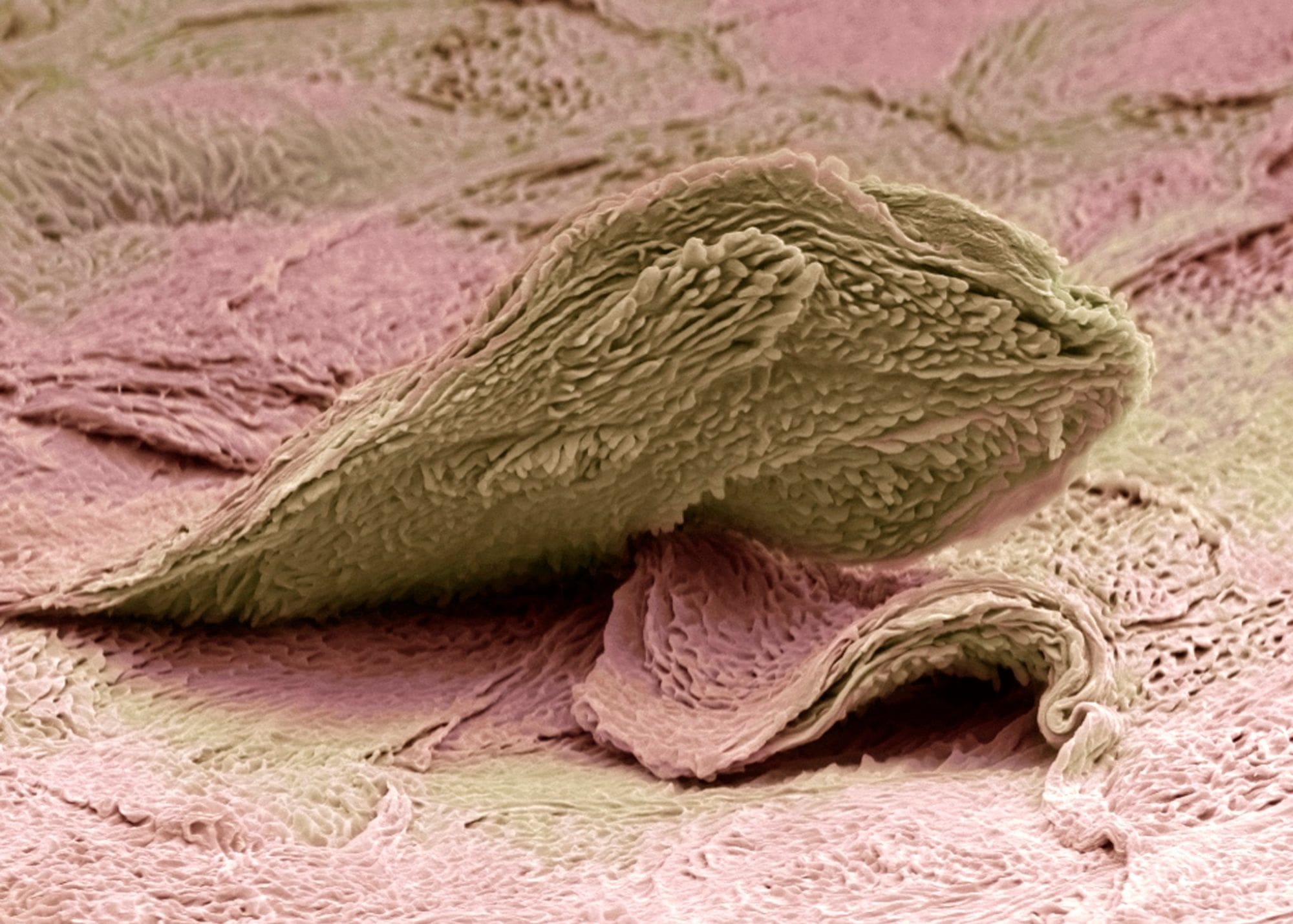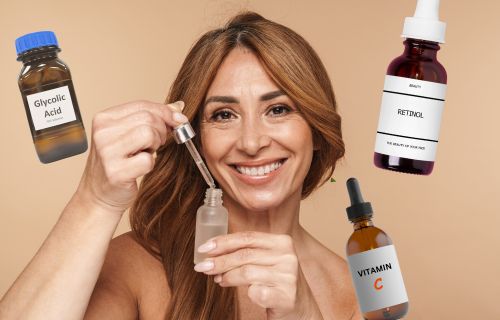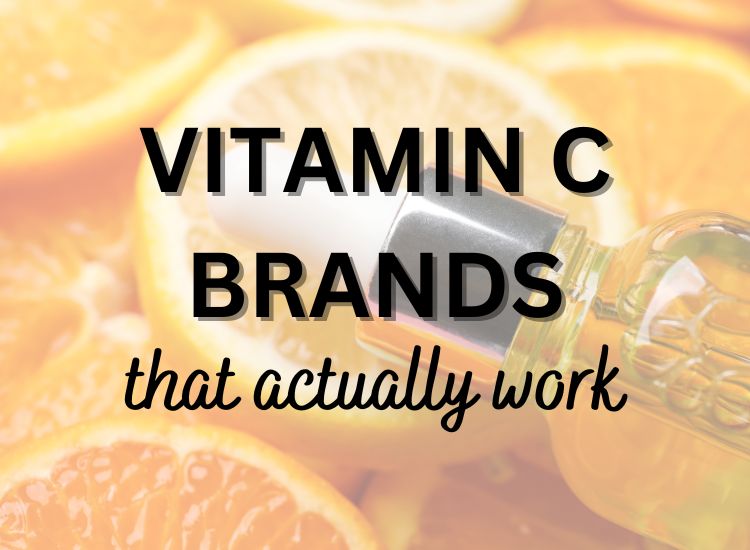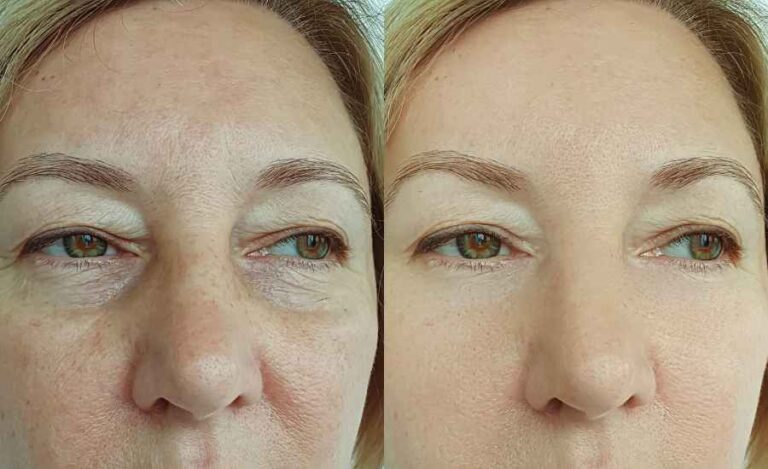Vitamin C vs Glycolic Acid, are they friends or enemies? Which one wins the battle from the two when it comes to fighting signs of aging? If you want to find out more so you can make an informed decision then read on.
I’ll explain how they work in the easiest possible way to understand and help you make the decision that your skin will thank you for later. Because just like you I am always in search of finding ways to stay youthful and radiant naturally as much as I can.
What does Vitamin C do to your skin?
Helps collagen production.
Vitamin C which often comes in the form of l-ascorbic acid (considered one of the stronger forms), Ascorbyl Phosphate, or THD (Tetrahexyldecyl Ascorbate) is proven to help collagen production by promoting cell turnover and nourishing the skin with a powerful antioxidant.
Brightens the skin and reduces dark spots (hyperpigmentation).
It also helps brighten the skin and get rid of those dark blotchy spots caused by sun or other free radical damage. A good quality Vitamin C Serum used regularly can help reduce signs of aging.
What is free radical damage?
Free radicals are like unstable troublemakers in your body. They have a missing piece, so they try to steal it from other molecules. This can create a problem called oxidative stress, where there’s an imbalance between these molecules and the body’s ability to stop them.
Free radicals can be generated through various sources, including exposure to ultraviolet (UV) radiation from the sun, pollution, tobacco smoke, certain drugs, and even as byproducts of normal bodily processes like metabolism.
When free radicals interact with molecules in the body, such as DNA, proteins, and lipids (fats), they can cause damage to these molecules. This damage, in turn, is implicated in various health issues, including premature skin aging.

Vitamin C in a cream or cleansing lotion.
Vitamin C products like creams and exfoliating face cleansers can be used to somewhat help these concerns, but often the potency or strength of pure vitamin C in such products is unknown.
Vitamin C Serum.
Vitamin C Serum usually comes in a variety of concentrations to suit different skin types and it can be easily identified. You can check the strength of the vitamin C products you are using on the label of the serum you buy. Not all but many brands will state on the label whether they have 5, 10, 15, or even 20+ % of pure vitamin C serum.
Skin sensitivity.
If you have a sensitive skin type then you might want to start with the lower concentration and work your way up monitoring how your skin reacts. This is the best way to avoid skin irritation.
What does Glycolic Acid do to your skin?
Exfoliates the skin and get’s read of dead skin cells.
Glycolic Acid, an alpha hydroxy acid, a natural derivative from sugar cane and some fruits, boasts several benefits for the skin. Notably, it excels in enhancing exfoliation by dissolving bonds between dead skin cells, promoting a smoother and brighter complexion. This acid stimulates collagen production, contributes to increased skin hydration, and possesses antibacterial properties that reduce breakouts.
Helps Vitamin C and other active skin care products penetrate deeper.
Moreover, Glycolic Acid optimizes the absorption of other skincare ingredients, including Vitamin C, by removing dead skin cells, allowing for deeper penetration and better results.
Evens out skin tone and slows down collagen breakdown.
Additionally, Glycolic Acid minimizes the appearance of pores, evens skin tone, quickens cell turnover, and plays a crucial role in preventing the breakdown of collagen. Its synergistic effect with Vitamin C ensures an optimized absorption process, maximizing the benefits of both ingredients.
Should you use glycolic acid or vitamin C serum?
So how do you choose the right product for your specific needs and skin type? Here is a guide to help you decide whether you should just start with one or include both to address multiple skin concerns.
Vitamin C vs Glycolic Acid: Skin Concerns and Benefits Table.
Click on the green plus sign to see what each product does to help each skin concern.
Skin Concerns |
Vitamin C Alone |
Glycolic Acid Alone |
Combined Power (Vitamin C + Glycolic Acid) |
|---|---|---|---|
Uneven Skin Tone, Dark Spots, Pigmentation. | Brightens and evens out complexion, reduces intensity of dark hyperpigmentation spots. | Removes dead skin cells allowing other products like Vitamin C and Retinol to penetrate deeper into the skin. | Works together to remove dead skin to allow Vitamin C antioxidant to penetrate deeper and reduce melanin production. Brightening the dark spots and making them less noticeable. |
Fine Lines and Wrinkles. | Stimulates collagen production, reducing fine lines and wrinkles. | Minimally effective on it's own to fight wrinkles, but a great helper to clear the path for other products that can do this. | By promoting collagen production together these ingredients allow the skin to regenerate and the surface becomes smoother and more youthful. |
Scars, uneven texture, bumps and lumps. | Smooths out uneven texture by detoxing the skin with it's antioxidant power. | Helps reduce bacteria and inflammation and aids the healing process. | While Glycolic acid helps reduce inflammation and heal the skin, Vitamin C further infuses the skin with the nutrients to help it regenerate new cells. |
Dry flakey skin. | Healthier skin absorbs moisture better. | Allows skin to absorb hydration better from other creams and Vitamin C itself. | Creates a pathway for the skin to absorb maximum moisture from other products like hyaluronic acid. |
Imagine Glycolic Acid as the meticulous cleaner, sweeping away dead skin cells with precision. Enter Vitamin C, the collagen-boosting wizard, here to elevate your skin’s texture and radiance. They are both very powerful and useful ingredients that can be included in your skincare regimen, and you can get both in one serum, so there is no need to buy multiple separate serums. You can find some suggested brands that include both in this list here.
Which acid is best for brightening the skin?
Topical vitamin C has been researched and studied for a long time and has been dubbed as one of the most powerful ingredients in skincare. It’s most effective at reducing the appearance of dark spots, slowing down melanin production, and promoting an overall brighter complexion. Being a huge player when it comes to contributing to a youthful appearance.
What is better glycolic acid or retinol for the skin?
I know in this article we are discussing Vitamin C vs Glycolic Acid. But let me touch briefly on how Glycolic Acid compares to Retinol when it comes to anti-aging since both of them a two of the most potent ingredients in modern skin care products.
Retinol is another active ingredient that is very popular among many skin care-savvy people. Most likely you’ve either heard of it or even perhaps already tried it. As mentioned before using glycolic acid helps remove dead cells on the skin to create a clear path for Vitamin C and Retinol to do their magic.
However, it’s a good idea to combine your Glycolic Acid with Vitamin C as your morning part of the skincare routine before applying sunscreen and retinol is best to use at night.
Dermatologists recommend not to combine Glycolic Acid and Retinol at the same time. But both products can be used on the same day but at different times of the day.
Why? Because one may reduce the absorption of the other and make it less active. So the answer is they are both fantastic for the skin and serve different purposes but at the end of the day, retinol offers a little more than glycolic acid in the fight against wrinkles and the appearance of fine lines.
Best ways to include Vitamin C, Glycolic Acid and Retinol in your skincare routine.
This is what I do to get the most out of my products as recommended by my dermatologist:
Morning time – a combination serum of high strength vitamin C and Glycolic Acid together with Hyaluronic acid, this is to tackle pigmentation and dark spots, hydrate my skin and remove dead cells, followed by high SPF tinted sunscreen to keep my skin healthy and protected throughout the day.
Evening time – Retinol to promote collagen production and reduce the appearance of fine lines, followed by rich anti-wrinkle night cream. Sounds like a lot, but it’s actually very easy and only takes me about 3-5 minutes in the morning and at night.
It’s a little daily effort done consistently for big results. I have been doing so since my late 30s and my skin actually looks better now in my 40s than it did before I started this regiment. So it’s definitely worth it in my humble opinion.
Decoding the Science: Making Sense of Collagen Production.
Let’s talk collagen – the holy grail for youthful skin. Both Vitamin C and Glycolic Acid play pivotal roles here. Vitamin C regulates collagen synthesis, encouraging new growth and helping bind collagen together. Glycolic Acid, on the other hand, aids in collagen protection by removing old skin cells and making way for the new.
What are the side effects of using Vitamin C and Glycolic Acid?
Although most side effects are temporary and usually affect people with more sensitive skin types, it’s important to understand these so you know what to look out for.
Temporary side effects.
Skin Irritation: Combining Vitamin C and Glycolic Acid may heighten the risk of skin irritation, particularly for sensitive skin. Gradual introduction and close monitoring are recommended.
Dryness or Peeling: The exfoliating properties of Glycolic Acid, in conjunction with Vitamin C, may lead to dryness or peeling, especially with higher concentrations. Adjusting dosage or frequency can help minimize these effects.
Sun sensitivity: Both ingredients can increase photosensitivity. Sunscreen use is crucial during the day to prevent potential sun damage and reduce the risk of adverse reactions. Ideally, you should always try to wear a hat if spending long periods outdoors.
Tingling Sensation: A tingling sensation may occur when using Vitamin C and Glycolic Acid together. If uncomfortable or persistent, consider adjusting usage or consulting with a dermatologist.
Longer term side effects.
Skin Sensitization: Prolonged use of Vitamin C and Glycolic Acid may lead to skin sensitization in some individuals, causing increased sensitivity or irritation. Regularly assess your skin’s response and adjust the products accordingly. You may need a break from time to time from active ingredients such as these. Around 1 week every 10-12 weeks, if your skin needs it.
Over-Exfoliation: Continuous use of Glycolic Acid, especially at higher concentrations, may lead to over-exfoliation, resulting in dryness, redness, or thinning of the skin. It’s essential to monitor the skin’s condition and adjust the frequency of use as needed.







